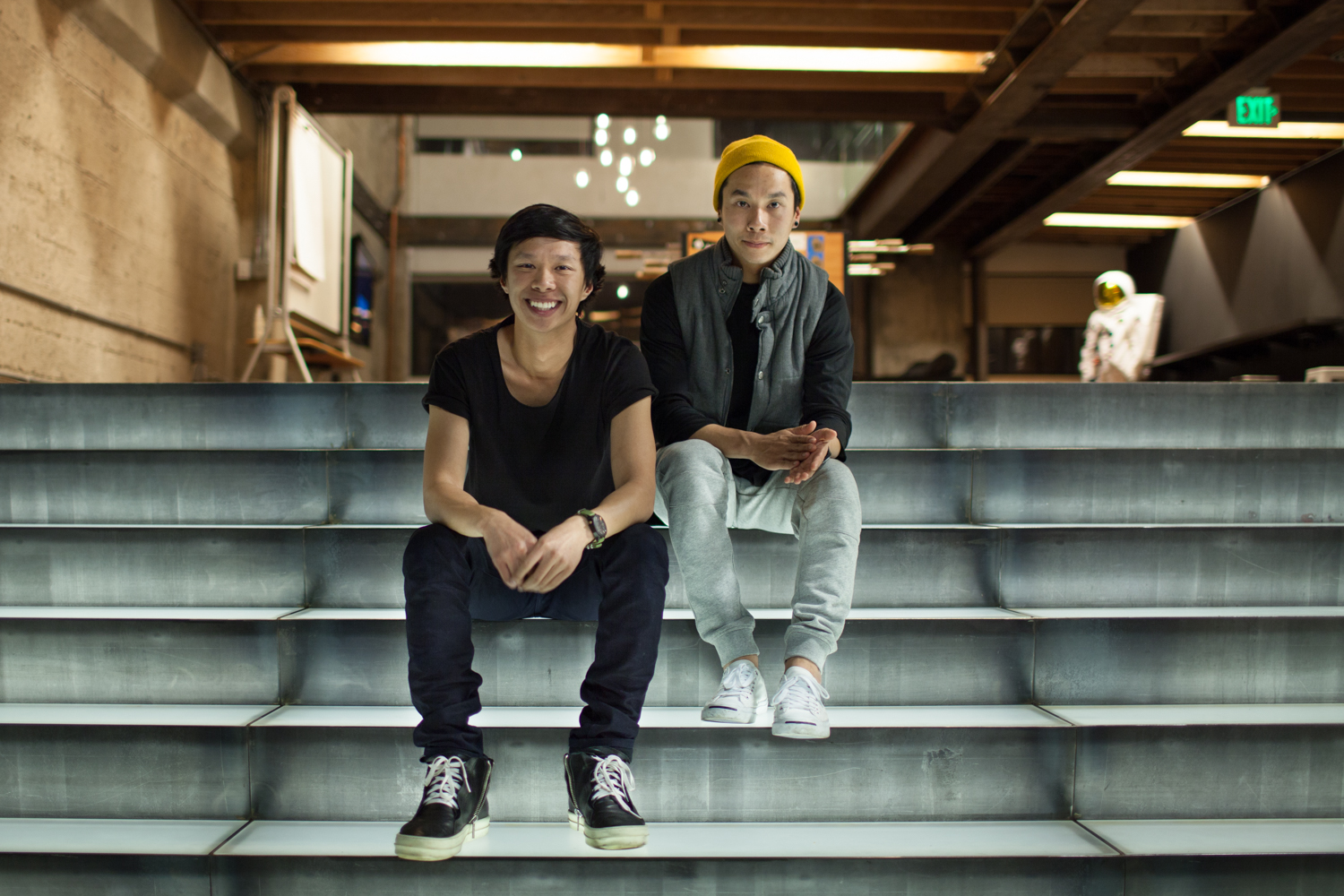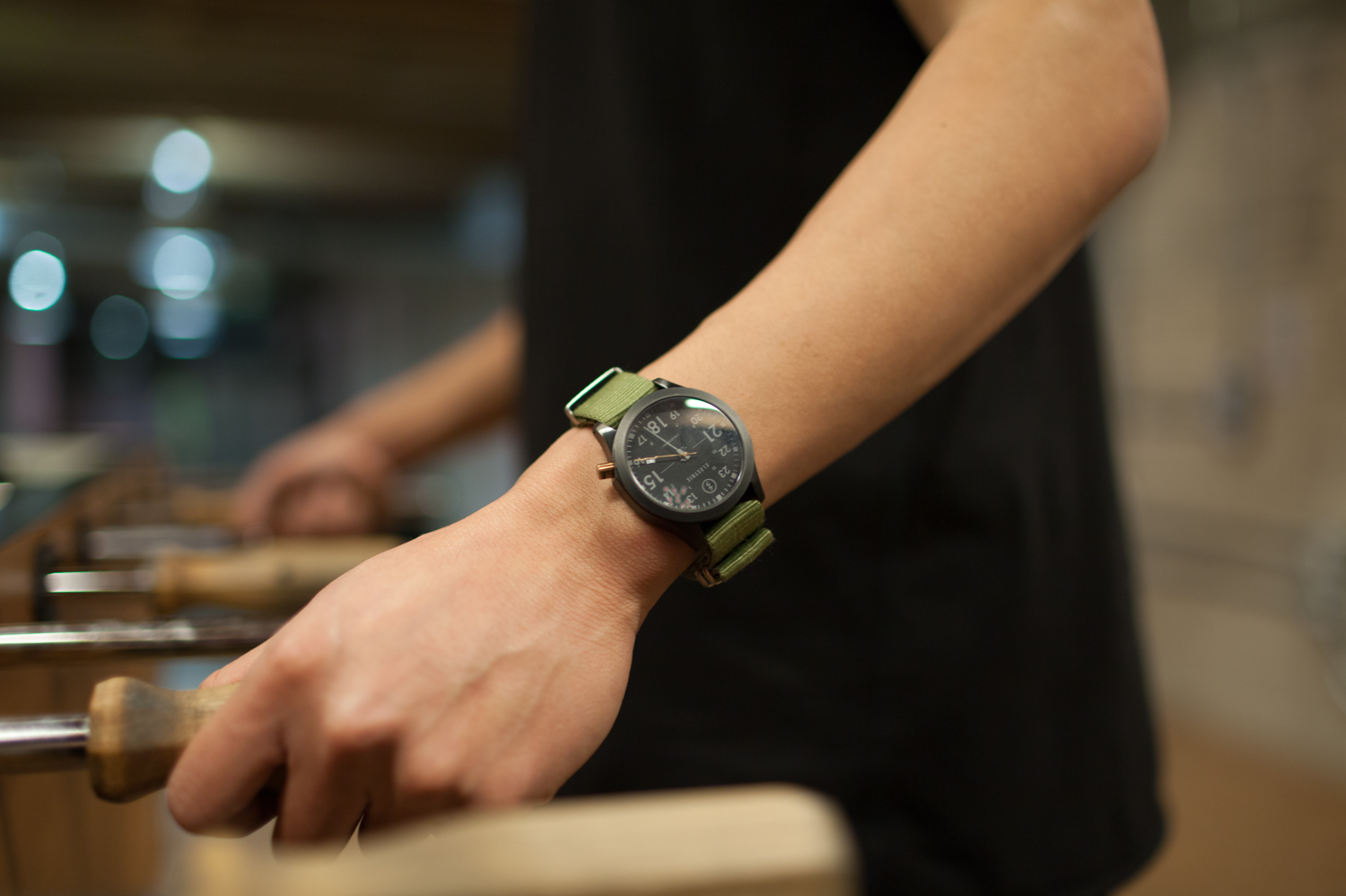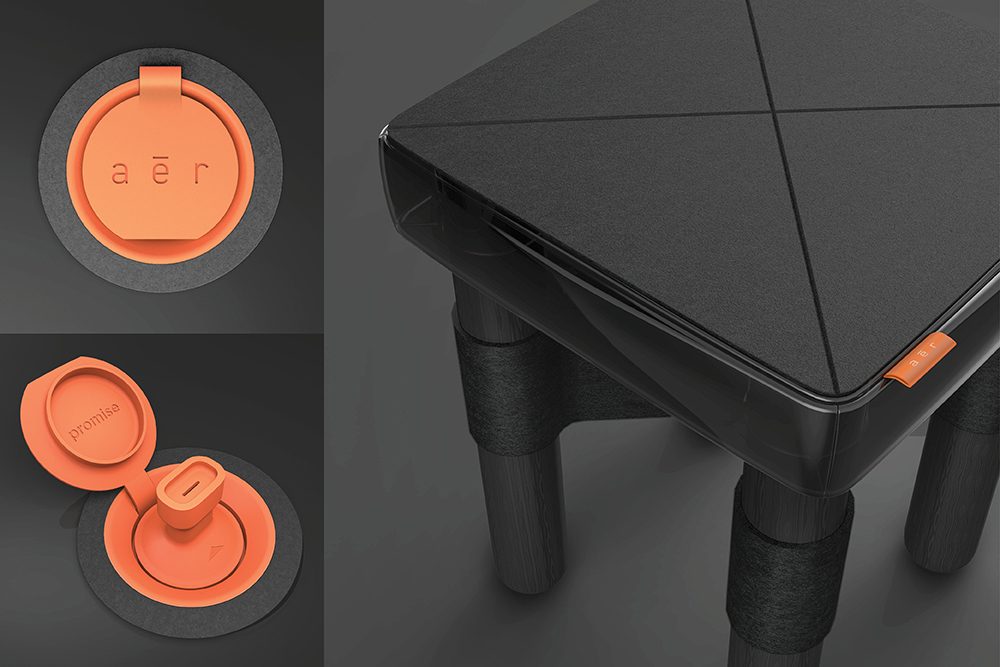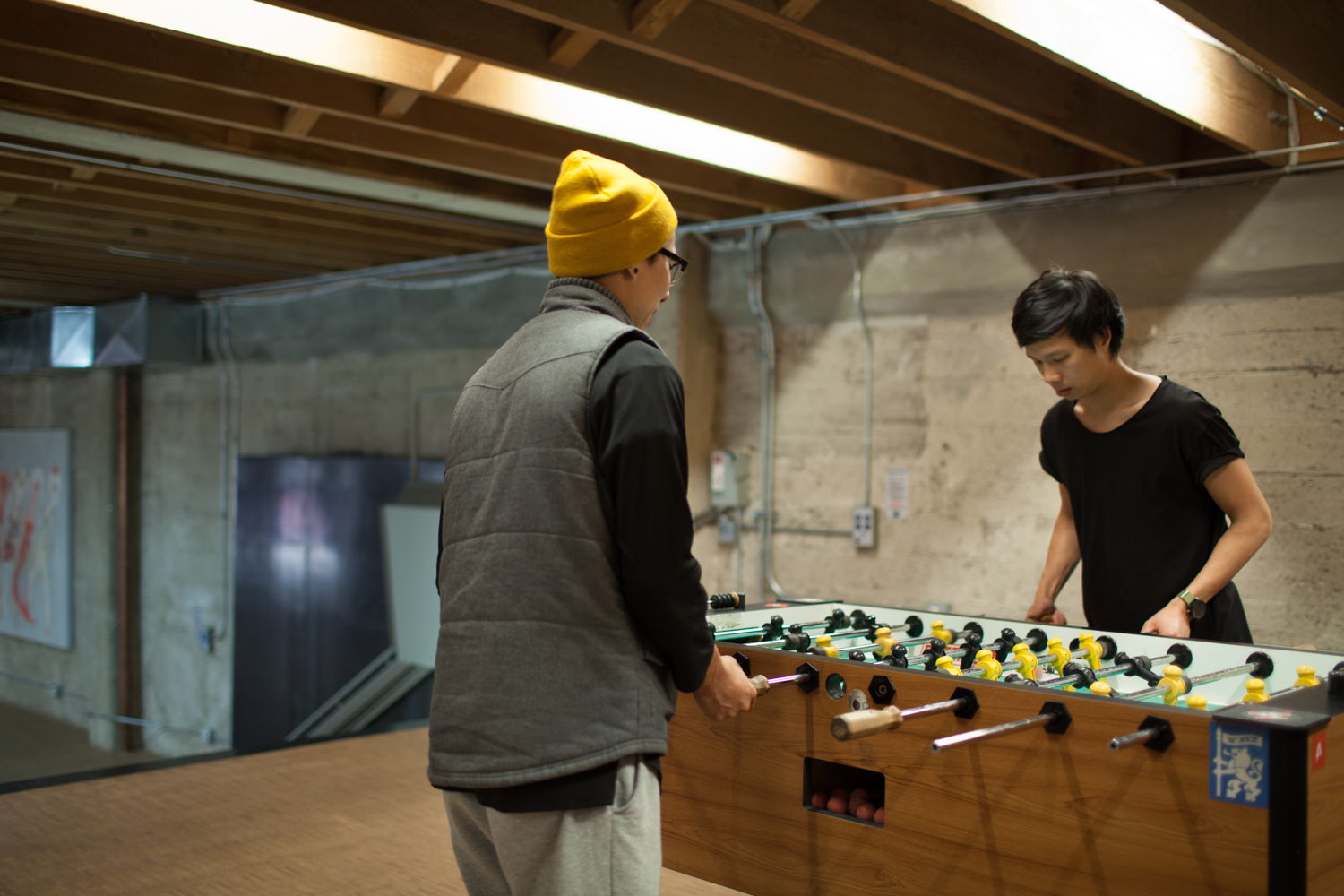The age-old debate of whether we’re a product of our environment will forever be contested from both sides of the spectrum, but in the case of brotherly industrial design duo Creative Session, no other version of their adolescence could have shaped their respective careers like the one they experienced growing up in Portland, Oregon.
The youngest of four siblings, Anh and Hoang Nguyen became thinkers at an early age. Growing up in a home housing as many humans as the appliances their father collected, both future designers experienced financial hardships early on, yet never allowed what they didn’t have to stunt their eventual breakthrough. They credit their father’s obsession with buying legacy items from Goodwill, taking them apart and putting them back together – because of this, Anh and Hoang subconsciously began to understand the art of problem solving, both mechanically and aesthetically.
Based in San Francisco, they both now work professionally as industrial designers for Astro Studios and Matter. Equipped with sharp skills and a unique perspective, both brothers have assisted in the development of notable technological advancements, including the design of the Nike Fuelband, Amazon Kindle and Amazon Echo. While in town, I caught up with Anh and Hoang for a lengthy chat about “designing for landfill”, what triggers their passion and why dreaming is more important than you’d think.

Creative Session founders Anh Nguyen & Hoang Nguyen
LUIS RUANO: What do you think was the catalyst for you guys pursuing a career in industrial design?
HOANG NGUYEN: We grew up [in a household] where my parents collected legacy items that would last ages and we were born into an era where everything is obsolete. We’re the children of consumption and we’ve lost the idea of collecting legacy items. [As kids] we would go to Goodwill and my dad would buy broken electronics in an effort to fix them. My parents still have appliances and things in their house right now that are from Goodwill. We’d never have new stuff growing up, it was always: buy it from Goodwill, go home, take it all apart, wipe it down with alcohol, and then try to fix it and use it in the house.
ANH NGUYEN: I think that was the root into why we got into industrial design. Mechanically, we always had these things around – not that my dad was a hoarder, but he more so prepared for a rainy day. We would have like ten broken microwaves, we’d have four washers and dryers in the backyard, and then if one broke, we’d take the drum from the other one and replace it. We not only got interested in industrial design, but it was almost like Malcolm Gladwell’s 10,000 hours theory; we’ve subconsciously been around someone that’s tinkering and fixing things [all the time].
WE WERE BORN INTO AN ERA WHERE EVERYTHING IS OBSOLETE
HOANG NGUYEN: Our family are farming folks, they immigrated in ’82 from Vietnam. Growing up, we had 10-12 people in the house and owned one family wagon, we’d stuff everyone in... the trunk, sitting on laps, laying on laps. We’d all pick strawberries for money, so it was really tough to ask for anything. The money we’d earn would be put in a pot for the community, my parents had four brothers and sisters that would live with us. We didn’t understand at the time, but adults need privacy, so we were always like, “Why do they get rooms?” We slept in the basement, between my four brothers until high school. We finally had our own rooms when we were 18, right before we were about to leave [for college]. It was fine, though – it created family bonding. But I do think my dad always tinkering [with electronics] led us to the way things are now.

Anh: I always listen to these podcasts – today I was listening to Design Matters and Debbie Millman asks Hartmut Esslinger [founder of Frog Design], “As a designer, are you an agent of change or a cultural beautifier?” She talks about how today we’re in an era of planned obsolescence and it’s defined by culture norm, branding, trends, social behaviors… it’s like we’ve gotten in this cycle where we’ve made it trendy to keep getting new shit every year, so at the end it’s like we’re designing for a landfill.
Hoang: There’s a show here called Cut & Paste – it’s a live design battle on-stage. It was like, “Oh, design an alternative form of transportation,” and I was competing in that against three other people from architecture firms and all sorts of things and everyone did the next scooter, or air travel, or something similar, and I designed a magic carpet. I put the magic carpet out in front of a bunch of designers and it was almost like a statement: We’re designers, we define how people fall in love with things, how people will use things... Why is a 600 horsepower thing still cool when we could make something that’s even cooler? As designers we can change the way people think, use, and live and do things because we can tweak things.
ARE YOU AN AGENT OF CHANGE OR A CULTURAL BEAUTIFIER?
Anh: One thing that’s super dope to me that we’re doing with Creative Session is we’ve always heard “form follows function” or “function follows form” and Hartmut Esslinger was talking about “form follows emotions.” I think that’s a dope thing, you know? I feel like Apple, as a brand, is someone who talks about form follows emotion. Everyone else is designing products and is like, “Oh, this button has to be here because of this function, we need ten of these buttons!” Most of the time it’s engineers limiting things, but it’s like, “Why don’t you guys follow the designer?” We’re trying to create this emotion, let’s design around the emotion.
The development process of Creative Session’s commissioned Audi dress for the A3 launch
Have you guys ever had a moment where you look back on something and second guess yourselves?
Anh: We’ve done so many projects where we’ve shortchanged ourselves. I’ve looked back and regretted how much I’ve charged people, like, “Holy shit, I ended up working crazy hours!” and then looking back and saying what the hell was I thinking? But it takes that to gauge. I honestly only knew we undercharged ourselves when we started working with consultancy studios and I see their bill and I’m like “Holy… that’s not good, that’s probably why they kept on working with us!” [laughs] I mean it’s all part of learning.
Hoang: We get shit [from people] for [our work with] Audi all the time, they’re like “Why didn’t you guys charge Audi and make money off it?” but that was honestly, for us, just an opportunity to get to know their design and marketing team, so why would you lose that opportunity for some cash? At the time we were working already, so it’s not like we needed the cash, so why not build that relationship? I think that’s one important factor people forget.
WE’VE DONE SO MANY PROJECTS WHERE WE’VE SHORT-CHANGED OURSELVES
Do you find it difficult to get your work understood by others?
Hoang: It’s interesting because recently we’ve been invited to do workshops and what I started realizing was, “Man, workshops and teaching is a whole ‘nother animal.” You don’t learn anything about yourself until you actually try to teach what you’re doing. It’s really tough for me to teach you exactly how I do what I do, because one, it’s skills and two, it’s technical skills, then it’s years of perception and experience and familiarity of what works for me.
I can teach you what I love about a door hinge, but sometimes I’m just inspired by a door hinge and it’s as simple as that. How do you implement that into a design course? It’s hard to teach. You eventually learn a way to teach technical skills and I think continually doing these workshops has made it a lot easier.

A rendering of the aēr chair by Creative Session
Aside from the tech stuff, what’s something you’ve worked on that had some personal meaning?
Hoang: One day, I was telling [Anh] that I’ve been really disappointed with people making promises and forgetting, so I was like, “How do we use our skills and develop something?” We came upon the Latin word, aēr; atmosphere and breath. When you speak, it’s about breath, so we developed a product called the aēr chair.
A thing people forget in design that’s important is that everyone thinks they need to be innovative and create really cool, futuristic things, but for us, on this project, we wanted to see how we could take technology that’s around us and tell a story that I’ve been trying to preach.
WE LIKE TO SPEND A LOT OF OUR TIME BLUE SKY DREAMING
Anh: The thought is being a man of your own words, sitting on your words. What you do is blow into the chair and when you blow, that’s your breath of air that you’re actually sitting on – it’s an inflatable chair. Every time you see that chair, it’s a reminder that when I blew in, I made that promise that I won’t smoke, so 30 days, if you’re gonna break that, then don’t even sit on me. It’s engineered to deflate by 30 days, so in those 30 days, I could make another promise to myself.
Hoang: Through that story there’s an inevitable philosophy behind there, a core value, and for us we wanted to design a product that subtly bows to that value. I think being in Silicon Valley, where you’re constantly working on technology, we lose that story-telling. I hope in the next adventure for Creative Session, we can incorporate that [thought process] in our teachings. “How can I provoke you to have a solid foundation, with a core value, before you start a design?”

Some brotherly competition on the foosball table
You guys are heavy dreamers.
Hoang: A lot of what we’re doing right now is experimenting, like I mentioned earlier, I feel like a lot of things we do become obsolete. Fuelband? Gone. I’ve gone through phases where we’ll hang out with friends and they’ll be like “Do you know who this guy is? Do you know what he did?” and I’m just like, “I honestly don’t care,” because I realize I’ve been living in the industry for so long that these things don’t really mean anything. You could have some nostalgic moments, like I spent Christmas holiday stuck in Portland in a blizzard storm and I played Xbox and that’s my best memory of the Xbox. These things go away, so I was telling [Anh], how do we stop creating landfill?
Anh: It’s like that function thing, forms follows function is very commercial. Form follows emotion is more higher level thinking. I think before you do all the aesthetic stuff and fill the world with more landfill, you need to stretch your mind and think beyond.
Hoang: I think we’ve been in this realm where we’ve produced enough to qualify ourselves that, yes, I can produce product, you’ve seen it, here’s a list of things I’ve done, but I want you to follow me just for my thoughts and my dreams. Growing up in an Asian household, we grew up with a lot of fairy tales, especially Japanese and Vietnamese; there’s always a moral to a story, and I think that’s how we design, but sometimes it gets lost in the 9–5 and we don’t get to tell stories. We like spending our time blue sky dreaming, rather than producing, because dreams continue, forever and ever and ever.
::
Follow Anh and Hoang’s journey through design via Instagram (@creativesession).

